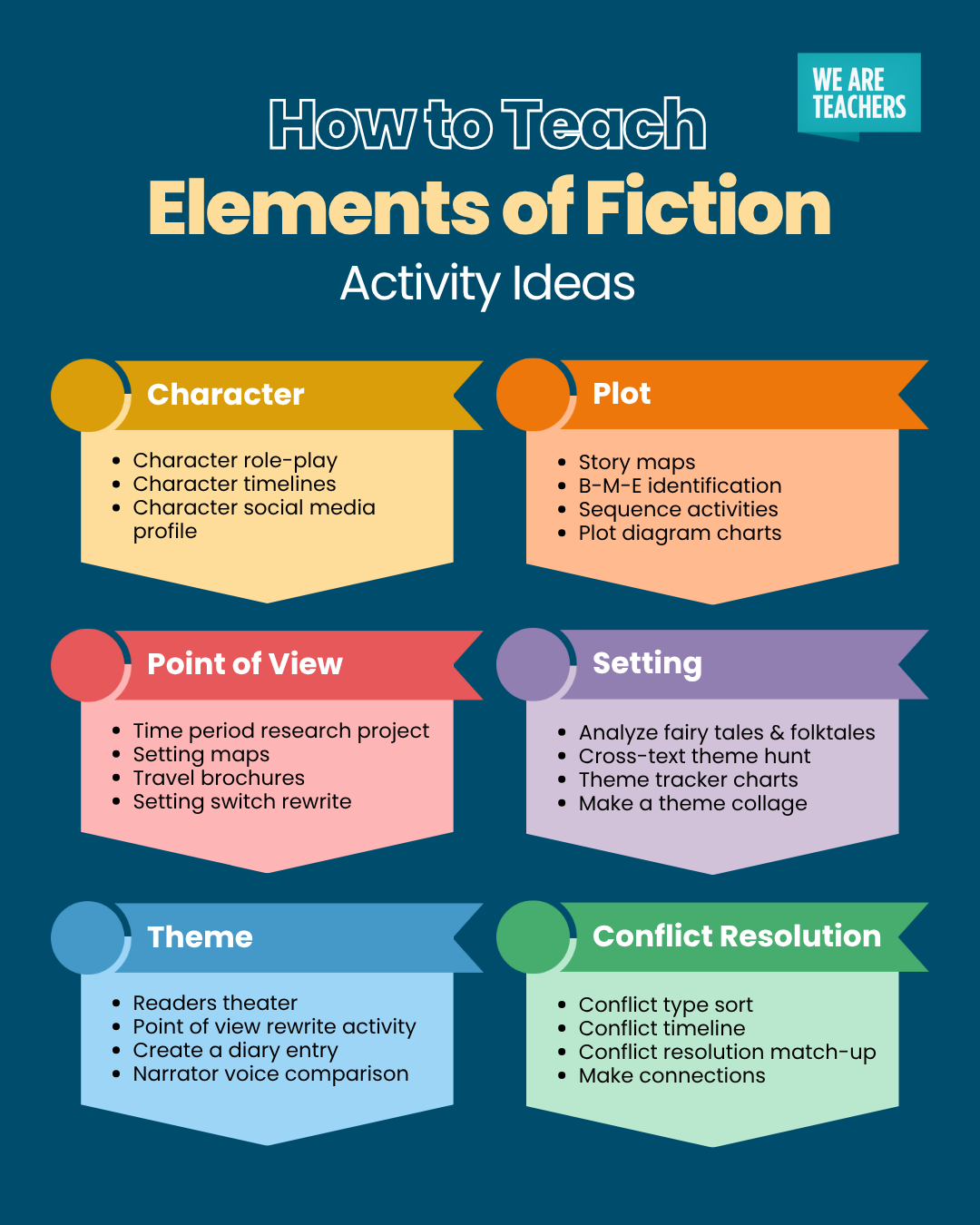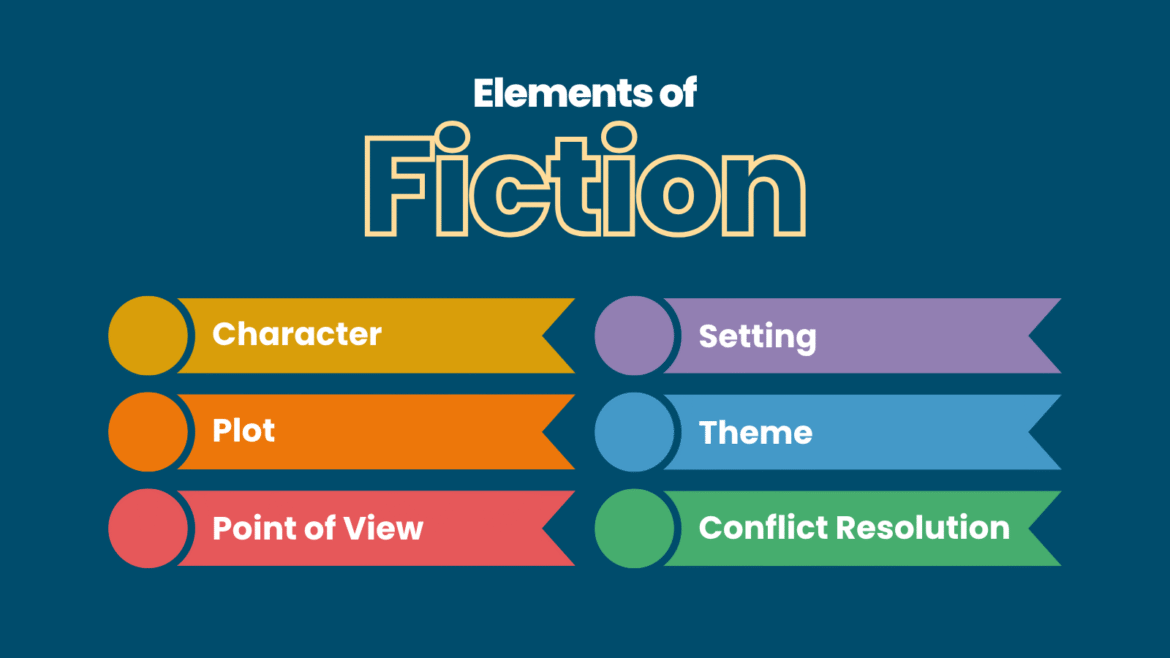There are so many facets involved in the science of reading. In the primary grades, students are just learning how to read, and the five pillars of literacy are the main focus: phonics, phonemic awareness, vocabulary, fluency, and comprehension. When students reach the upper elementary grades, things shift from learning how to read to reading for meaning. This is the start of a new era for English Language Arts (ELA) students, where elements of fiction are now the main focus.
Third grade is the start of high-stakes standardized testing, which continues until high school graduation. A deep understanding of the elements of fiction is crucial for students at this point in their ELA education. The six elements of fiction are character, plot, point of view, setting, theme, and conflict resolution. Each one helps students deepen their understanding of a text as they analyze and synthesize information. Let’s get to know more about each and how to incorporate fun ways to teach them to your students.
6 Elements of Fiction
- Story maps: Have students draw events in sequence, creating a map of events. There are plenty of ways to do this using different types of ready-made graphic organizers.
- B-M-E identification: Have students write a few sentences to a paragraph each for the three main parts of the story: beginning, middle, and end.
- Sequence activities: Provide sentence strips or cards with different events from the story. Students then put them in the order in which they occurred.
- Plot diagram charts: Make a diagram to show the rise and fall of the plot. Label it with the five key stages of a story: exposition, rising action, climax, falling action, and resolution. Use a plot pyramid template to map the story structure, or get artsy with a mountain or roller coaster shape.
Setting
The setting is where and when the story takes place. It is important to identify it from the start since it sets the tone and builds an understanding of the other elements.
Ideas for teaching setting:
- Time period research project: Identify the time period of the story and have students research trends, events, and other fun facts about it.
- Setting maps: Create maps showing the different locations (real or fictional) of where the main events take place.
- Travel brochures: Create a travel brochure for a story’s setting. Include landmarks, best things to do, important places from the story, and other highlights to convince others to visit.
- Setting switch rewrite: Students rewrite the story (or a major scene) in a completely different time and/or place. Students then analyze their own writing (or a classmate’s), comparing and contrasting it with the original version.
Theme
The theme is the central idea, message, or lesson of a story.
Ideas for teaching theme:
- Analyze fairy tales and folktales: Both genres are great since they are short stories where characters often learn a lesson at the end.
- Cross-text theme hunt: Compare two or more texts (stories, poems, or songs) with similar themes and discuss how each conveys the theme differently.
- Theme tracker charts: Students go back through a text individually or in groups and record evidence supporting the theme. For example, as characters grow and change, the theme develops. How does it all build up to the end?
- Make a theme collage: Students create a digital slide or draw a poster containing different images supporting the theme of a story.
Point of View
The point of view refers to how a character feels and tells the story. This can also refer to the perspective of the narrator of the story.
Ideas for teaching point of view:
- Readers theater: Students are assigned different characters to act out from a story. They tell their point of view of events based on how their character sees it.
- Point of view rewrite activity: Students rewrite a short story or scene from another character’s perspective or as the narrator.
- Create a diary entry: Students pretend to be a character from the story and write a diary entry describing a main event from the story. Students should go into detail about the setting, feelings, relationships with other characters, and more.
- Narrator voice comparison: Read two versions of the same event from different points of view. Compare and contrast the point of view of each narrator using a Venn diagram. Fractured fairy tales are great tools for exploring point of view since they take a different angle on the original.
Conflict Resolution
The conflict in a story refers to the problem a character faces in the story. The main types of conflict are as follows: character vs. self (internal conflict), character vs. character, character vs. society, character vs. nature, character vs. technology, and character vs. the supernatural. The resolution is how the problem is solved.
Ideas for teaching conflict resolution:
- Conflict type sort: Provide students different scenarios or excerpts from stories. Students identify the type of conflict: character vs. character, self, society, nature, technology, or the supernatural.
- Conflict timeline: Students record a conflict’s development over time, from the beginning to the end of a story. Students analyze how the character reacts during each event.
- Conflict resolution match-up: Write out conflict situations on index cards. Make a matching card for each with a possible resolution. Students match them, providing reasons why they go together. The cards can have more than one answer, providing a fun and creative way to solve the problem!
- Make connections: Compare a conflict in a text to another situation. Connections can include text-to-text connections, text-to-self connections, or text-to-world connections. Identify how the scenarios are alike and come up with a resolution that works for both examples.

Elements of Fiction Anchor Charts
If you need anchor charts to help teach elements of fiction to your students, look no further! Check out these examples and re-create your favorites for your classroom.
More English Language Arts Resources for Teachers
Visit our English Language Arts page for even more resources for every grade level.


